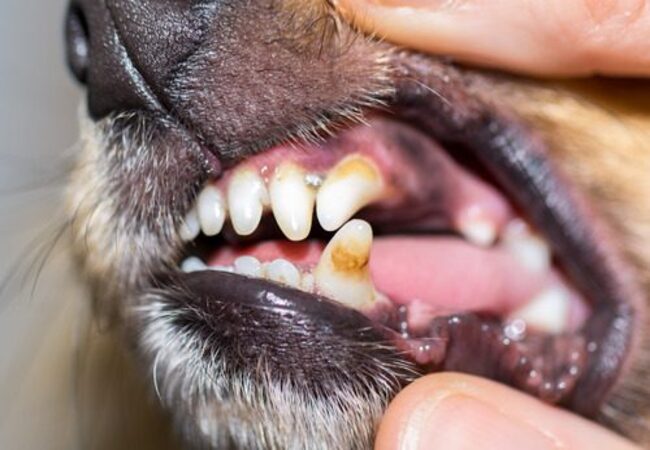Vet’s 2025 Guide to Retained Baby Teeth in Dogs Causes, Treatment & Prevention 🩺

In this article
Vet’s 2025 Guide to Retained Baby Teeth in Dogs Causes, Treatment & Prevention 🩺
By Dr. Duncan Houston BVSc
💡 What Are Retained Baby (Deciduous) Teeth?
Retained baby teeth, also called persistent deciduous teeth, are deciduous teeth that remain in the mouth after their permanent counterpart has erupted, usually between 4–7 months of age. Instead of falling out, these teeth stay—leading to issues such as overcrowding, misaligned bites, periodontal disease, and pain.
⚠️ Who's Most Affected?
- Small and brachycephalic breeds: Maltese, Poodle, Yorkie, Pomeranian, bulldogs—genetic predisposition.
- Canines and incisors: upper canines most commonly, followed by lower canines and incisors. Premolars are rarely affected.
- Caused by root resorption failure: permanent tooth erupts normally but the deciduous root fails to resorb, causing persistence.
🚩 Clinical Signs & Complications
- Visible extra teeth: both baby and permanent teeth present simultaneously.
- Crowding, malocclusion: improper bite alignment, teeth may interlock or contact soft tissues causing trauma.
- Gingivitis or periodontal disease: debris trapped between overlapping teeth leads to plaque, tartar buildup, gingival inflammation, and eventual bone loss.
- Pain and infection: fractured baby teeth or root remnants can abscess and hurt.
- Interference with jaw growth: prolonged retention may disrupt jaw development, requiring orthodontic treatment.
🔍 Diagnosis & Veterinary Assessment
- Oral exam: vet checks for retained teeth, alignment, soft tissue trauma. Should be done weekly up to 7–8 months of age.
- Dental radiographs: confirm presence of baby vs permanent teeth and detect root remnants, unerupted teeth, or cysts.
- Monitor crowding and bite issues: if malocclusion is noted, early extraction is emphasized.
🩺 Treatment: Timing & Techniques
✅ When Should You Extract?
- Immediately after permanent eruption: typically, once permanent tooth breaks through, the retained baby tooth should be removed.
- At spay/neuter appointment: convenient timing while under anesthesia.
- Delay is not recommended: crowding and disease can progress. Exceptions: asymptomatic retained premolars without successors may be monitored radiographically.
🛠 Extraction Procedure
- Performed under general anesthesia with a full oral exam.
- Use of gingival flap and dental instruments to extract entire tooth, including the root.
- Extra care to preserve developing permanent tooth roots.
- Radiographs post-extraction to confirm root removal; referral to veterinary dentist may be necessary for complicated cases.
📅 Post‑Extraction Care & Recovery
- Soft diet: canned or moistened food for 24–48 hrs.
- Activity restriction: avoid chewing toys or vigorous play for 1–2 days.
- Pain relief & antibiotics: prescribed based on discomfort and infection risk.
- Oral hygiene: gentle brushing or dental rinses started 24 hours post-op.
- Follow-up: recheck healing and ensure permanent tooth alignment; take radiographs if needed.
🔄 Prevention & Long‑Term Oral Care
- 🙏 Weekly dental checks until at least 8 months—look for retained teeth.
- 🦷 Regular brushing—minimize plaque build-up.
- 🧩 Provide safe chew toys that are not too hard.
- 🦷 Professional dental cleanings: yearly for most dogs, more often if small breed.
- 📸 Monitor bite alignment—malocclusion can lead to enamel wear or soft tissue trauma.
🏡 Ask A Vet Home Support
- 📸 Photo uploads: owners send mouth pics for early detection of retained teeth or crowding.
- 🕒 Reminders: schedule weekly dental checks, brushing, and post-op care.
- 📊 Track symptoms: bleeding, drooling, chew reluctance after extraction or crowding signs.
- 🔔 Alerts for signs like swelling, pain, or malocclusion prompting vet recheck.
- 📚 Guided care tutorials: how to brush, choose safe toys, and monitor mouth development.
🔑 Key Takeaways
- Retained baby teeth are common in small/brachycephalic breeds—especially canines.
- Risks include crowding, misalignment, periodontal disease, trauma, and abscesses.
- Early detection (by 6 months) and prompt extraction (with anesthesia) prevent complications.
- Post‑extraction care, safe chewing, and oral hygiene maintain long‑term dental health.
- Ask A Vet supports owners through reminders, monitoring, remote vet input, and education.
🩺 Final Word ❤️
In 2025, dental health starts early—weekly mouth checks, careful monitoring, and timely veterinary intervention keep your pup’s smile healthy for life. Best of all, most retained baby teeth are easily removed during routine vet visits, reducing pain, infection, and future dental issues. With home support from Ask A Vet, proactive dental care becomes second nature—your dog’s healthy smile is worth it! 🐾✨
Visit AskAVet.com and download the Ask A Vet app to log dental checks, set brushing reminders, upload photos, schedule cleanings, and stay connected to your vet—right from your home. 📲






